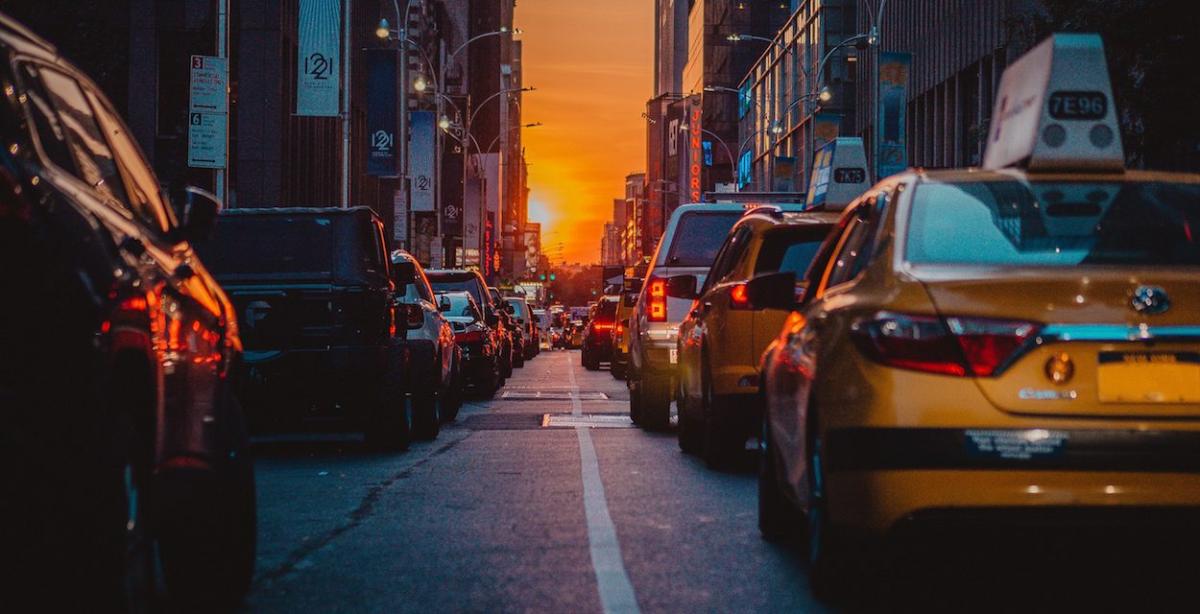Does the City of the Future Mean Fewer Cars?
by Emma Kantrowitz

The U.S. has long been the land of the automobile. We design cities around parking lots, create suburbs “within driving distance” of major metropolises and have highways that span coast to coast. The car is an undeniable part of America’s history and has shaped how much of it looks today. But as more and more people move to cities—the UN predicts that 68 percent of the world’s population will live in urban areas by 2050, up from 55 percent—and the impact of climate change becomes more prevalent, what does that mean for the state of the automobile?
“As urbanization increases, infrastructure and mobility systems designed in the 1950s are reaching a breaking point, with growing congestion and pollution, and persistent injuries and fatalities,” write Charlie Johnson and Jonathan Walker in recent Rocky Mountain Institute research report, Peak Car Ownership.
The answer to these growing problems? There’s no seamless solution, but between autonomous vehicles, urban policies like congestion pricing and “little vehicles”—namely bikes, motorized scooters, and other such low-speed personal transportation options—individually owned cars are slowly being phased out.
For those living in cities, the luxury of owning a car (or two) to match their suburb-dwelling counterparts has long been stymied by high parking prices and traffic. For New York City, only four percent of drivers in midtown Manhattan are people commuting to work, according to analysis by the Tri-State Transportation Campaign, meaning the rest of the drivers on the road are predominately transportation companies, like Uber and Lyft, taxis and delivery drivers.
New York City’s most recent proposed congestion pricing plan tried to enact a pricing zone south of 60th street in Manhattan, charging trucks, for-hire vehicles and ordinary drivers various fees to drive within the most traffic-heavy section of the city. Though it didn’t pass through the state assembly, the plan brought congestion pricing back into the public sphere, highlighting how far cities and states will go to ease car traffic in urban areas.
Autonomous vehicles have the potential to shake up the automobile industry by freeing up the need for individuals to own their own cars. Rather being built around a driver, they can be built around the consumer, offering up a very different rider experience than what we’re used to.
“Imagine a coffee shop on wheels, that drives you to your doctor’s office. Or a comfy hotel bed that drives you to your in-laws for Thanksgiving. Or an Amazon store carrying household staples that roams a downtown area, waiting to be hailed to an apartment,” said The Atlantic reporter Derek Thompson in a recent article.
Whether self-driving vehicles will have a place on city streets remains to be seen. But one new mode of transportation that is already showing up across the country and making waves is “little vehicles.” Low-speed personal options, like scooters and bikes, offer a new way for short-distance commuters to get to work. And since nearly half (45.6 percent) of all vehicle miles traveled by car in 2017 were on trips less than three miles, according to the Federal Highway Administration’s National Household Travel Survey, little vehicles already have a placeholder in the market.
“Ultimately to fuel people’s needs in the urban environment we’re going to need a variety of vehicle applications for different purposes and personal needs,” Rob Cotter, founder and CEO of Organic Transit, told CityLab. “And all of them are pretty much wonderful for specific uses—really, except for the automobile.”

